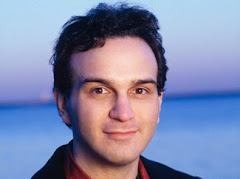Two perennial favourite artists at the DFP, Mark Wigglesworth and James Ehnes joined forces to present an eclectic programme of Romantic and modern works with the MPO. Wigglesworth began the Saturday concert with one of Verdi’s finest overtures, La forza del destino, which is frequently performed independently as a concert piece or encore. The MPO strings gave the "fate" motif a restless feel, whilst the "destiny" motif was prominently played with flowing melodic lines.
Alban Berg’s dodecaphonic Violin Concerto of 1935 followed the Verdi Overture. This was only the third performance of the concerto at the DFP Hall in the space of 20 years since the concert hall opened in 1998. The first performance was by Chantal Juillet with the MPO in November 2006, and the second by Frank Peter Zimmermann and the London Symphony Orchestra in May 2007. The modernist slant of the concerto probably resulted in the hall being less full than if the soloist James Ehnes had chosen a piece more central to the core violin concerto repertoire instead.
Written in response to the early death of a close friend's daughter Manon Gropius, the Berg Violin Concerto is in two sections. From the magical ascending open fifths at the beginning of the concerto, Ehnes demonstrated his complete mastery of the concerto's inherent lyricism depicting Manon's life of beauty and innocence in the first section.
Less successful was the unsettling Allegro in the second section, whose vehement and astringent mood contrasts greatly with the lyricism of the first. Despite his impeccable technique and his superb 1715 ex-Marsick Stradivari, Ehnes frequently struggled to be heard here, despite the solo part sometimes being subsumed in the orchestral texture as per Berg’s score. However, the final passage depicting Manon’s death and transfiguration took us into the stratosphere and was quite sublime in its purity and celestial beauty.
For his encores, Ehnes performed the calm and flowing "Largo" from JS Bach’s Solo Sonata No 3 BWV 1005, which contrasted strongly in atmosphere to the Violin Concerto, providing the audience with some welcome relief after the diatonicism of the Berg. After the Largo, Ehnes followed it with a dashingly speedy and nimble Allegro Assai from the same Solo Sonata, clearly delineating Bach's harmonic and melodic structure amidst the rapid string crossings.
After the interval, Wigglesworth gave us a sumptuous interpretation of Sibelius' lush Second Symphony, which was written in balmy Italy. After the Berg, the MPO seemed almost miraculously transformed for the particular lush sonorities of Sibelius. The symphony got a very compelling performance which thrived on luminous textures as well as fluent dynamics and judicious balances between the various orchestral sections.
Wigglesworth set just the right tempo at the start of the symphony, with the ebb and flow in the strings’ opening phrases like the gentlest of sighs. The movement flowed swiftly with gorgeous string tone and a folksy lilt to its woodwind themes with occasional glimpses of brassy excitement.
Some noteworthy playing from the bassoons opened the second movement before giving way to the sprawling strings that painted a barren, forlorn vista, which was interspersed with atmospheric silences and granitic climaxes. The third movement was almost Mendelssohnian in its lightness and energy, interfused with a gorgeous and limpid solo oboe in the Trio.
The finale bursts out of the preceding movement and the MPO string playing reached new heights with a most luxurious and sonorous timbre coupled with splendid brass tone capping a resplendent and triumphant interpretation from Wigglesworth.
Wednesday, 19 December 2018
Sumptuous Sibelius from Wigglesworth
Subscribe to:
Post Comments (Atom)


















































No comments:
Post a Comment